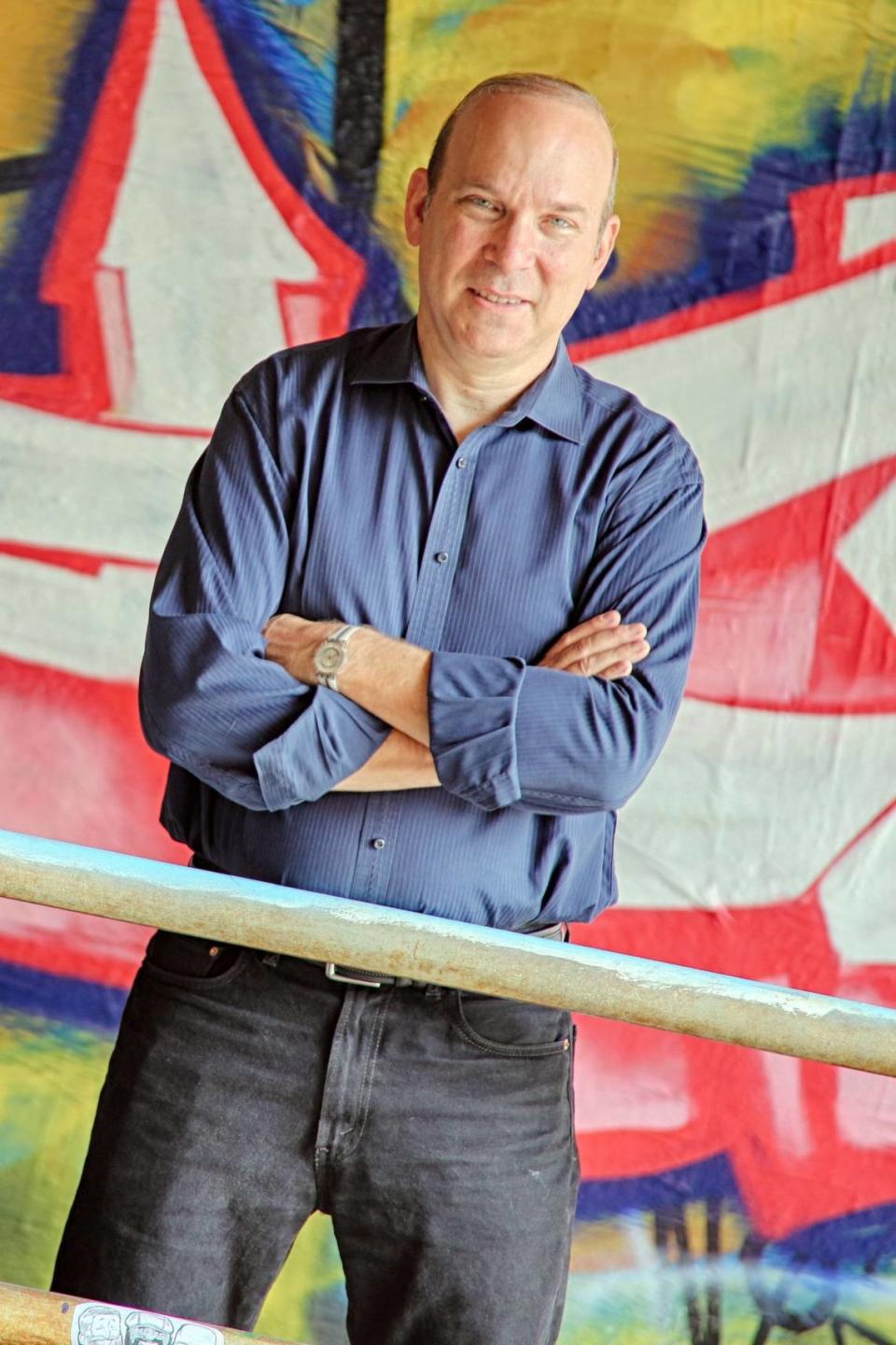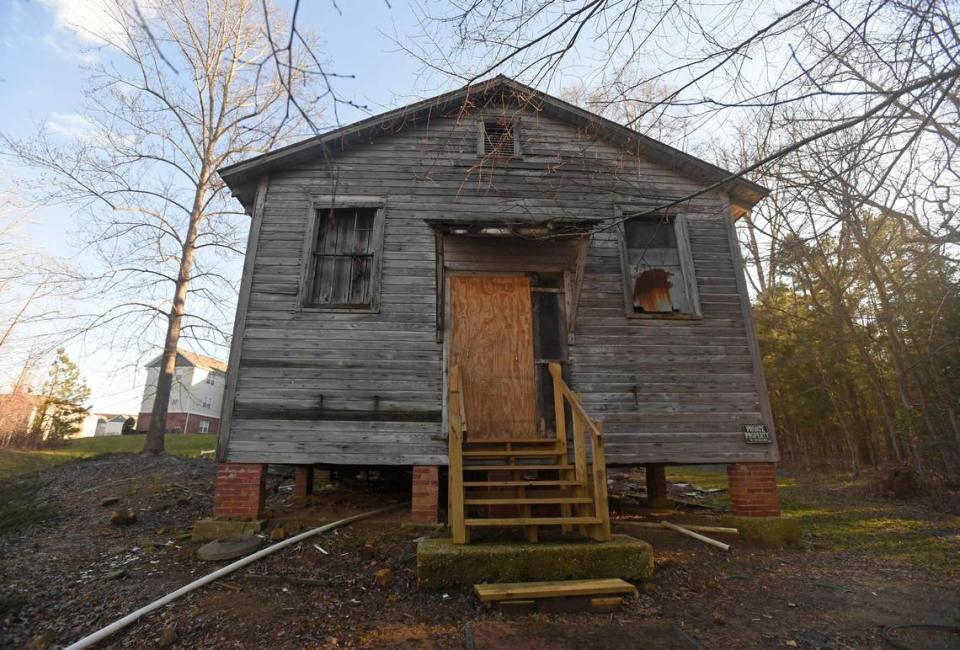‘A Better Life’: Charlotte museum highlights Black history in Rosenwald schools exhibit
- Oops!Something went wrong.Please try again later.
- Oops!Something went wrong.Please try again later.
A Jim Crow-era partnership between a Black educator and a Jewish CEO changed the lives of Black children and families in the American South for generations.
And now, a traveling photography exhibit honoring the results of that partnership, “A Better Life for Their Children,” is coming to Charlotte in early February to the Charlotte Museum of History. It’s just the second stop for the tour, following the National Center for Civil and Human Rights in Atlanta.
The exhibit opens Feb. 5 and runs through June 18 in Charlotte. It explores the history of the Rosenwald schools — a program by Booker T. Washington and Julius Rosenwald, president of Sears Roebuck & Co. — to build schools for Black children in the segregated South.
Born to Jewish immigrants, Rosenwald turned Sears into the world’s largest retailer. Washington, who was born into slavery, became the founder and first president of Tuskegee Institute (now Tuskegee University).
The Charlotte museum is hosting the exhibit as part of its Save Siloam School Project to preserve one of Charlotte’s last standing Rosenwald-era schools, which is in the University area.
The photos of old, and in some cases, abandoned, schools resonate today.
Fannie Flono is a Charlotte Museum of History trustee, former Observer editorial board member and chair of the Save Siloam School Project. “We still have gaps in resources for Black Americans and white Americans,” she said. “But Julius Rosenwald and Booker T. Washington showed us you can help narrow those gaps if we join hands and figure out ways to provide those resources.”.

A journey over 3 years in the making
Exhibit photographer and curator Andrew Feiler approached the exhibit and his accompanying book, “A Better Life for Their Children: Julius Rosenwald, Booker T. Washington, and the 4,978 Schools that Changed America” from the perspective of a Jewish man raised in Georgia.
“The reason there were so many (schools) was that the African-American community was not afforded school buses,” Feiler said. “Students had to be able to walk to their schools.”
Restoring part of Charlotte’s Black history centers on saving a Jim Crow-era school
He had never heard of the schools. But soon after he submitted his first book in 2015 — “Without Regard to Sex, Race, or Color: The Past, Present, and Future of One Historically Black College” — someone in the Georgia Historic Preservation Office suggested he might be interested in them.
“I Googled and found there were a few books on the topic, but there was no comprehensive photographic accounting,” he said. “So, I set out to do exactly that. And that journey took me three-and-a-half years and 25,000 miles across all 15 of the program states.”
Of the original schools built between 1912 and 1937, some 500 survive, Feiler said. About half of those have been restored.

‘Part of the American soul’
Communities in North Carolina built 787 Rosenwald schools — more than in any other state. There were more than 20 built in Mecklenburg County alone.
“Of the 105 schools I went to, only five are still in use for educational purposes,” Feiler said. “To survive, they had to have been adaptively reused. And the adaptive reuse narrative is an important component of the story; there is an inherent plea for preservation.
“I came across schools that had collapsed so recently, one of them was surrounded by yellow caution tape,” he said. “When we lose the structures, we lose a part of the American soul.”
Some other schools were later turned into community centers, museums, residences or church halls, Feiler said.
His book has 85 images of Rosenwald schools, as well as stories and portraits of people connected to the schools. The late Congressman and civil rights icon John Lewis, who attended a Rosenwald school in Alabama, wrote the book’s foreword.
The themes Feiler is drawn to as a photographer are an extension of his civic values. “My first book… uses this idea of an emotional resonance of educational spaces,” he said.
“This story gives me the extraordinary opportunity to talk about the role that education has played as the backbone of the American dream, the access point of the American middle class and even more importantly, the collaboration across divides of race, religion and region that were foundational to the civil rights movement.”

Rosenwald schools’ distinctive design
Feiler has an extensive knowledge of his subject. Ask him about the architectural elements of Rosenwald schools, and he’ll say he needs to back up.
“I have to first tell you about Robert Robinson Taylor, the first African American to attend MIT and the first accredited African-American architect,” Feiler said. “He also happens to be the great grandfather of Valerie Jarrett, a principal advisor to President Obama. Her portrait is in my book to tell the story of Taylor, who was hired by Booker T. Washington to be the chief architect at Tuskegee.”
Taylor designed Rosenwald schools with large banks of windows to let in lots of light. Many of the old schoolhouses did not originally have electricity, Feiler said.
“They also had cloak rooms, so dirty outer garments could be kept separate from the education spaces,” he said. “They also had room dividers... so that the schoolhouses could serve as community centers after hours.
“This idea of dual use of the schoolhouse as civic space is designed into the program from the very beginning,” he said.

Flono has a personal interest in Rosenwald schools. Her cousin attended one in Edgefield, South Carolina. Georgia Collier Scott lived near her school, which was associated with Hopewell Baptist Church.
Flono’s cousin died a couple of years ago at age 102. “She was the first person in her neighborhood to go to college and the first person to get a master’s degree, and was very well respected in her community, Flono said. “All of those things she attributed, in part, to attending a Rosenwald school.
“She talked about how the (previous) school she went to before was drafty and in disrepair,” Flono added. “There was only one teacher. She finally had a desk at the Rosenwald school. They had food, three teachers for grades 1 through 8, access to more books.”
An early challenge grant
In the early 1900s, “public schools for African Americans were mostly shacks, with a fraction of the funding provided for the education of white children,” Feiler said. “Many jurisdictions did not even have public schools for African Americans. So, Rosenwald and… Washington created this program.”
The Black community had to contribute in some way, such as cash, land, material or labor. The Rosenwald team would connect with the all-white school board to find out how they would contribute.
These had to be public schools governed by an existing school board. If the school board would, at a minimum, pay for the teachers, Rosenwald would make a substantial contribution toward school construction.
“This is one of the earliest examples of a challenge grant in American history,” Feiler said. “The innovative nature of the design of this program was genius.”
And the relationship between Rosenwald and Washington is one of the earliest collaborations between Jews and Blacks in the cause of civil rights.
“Many of the leaders and foot soldiers of the civil rights movement came through these schools,” Feiler said. “Medgar Evers, Maya Angelou and multiple members of the Little Rock Nine who integrated Little Rock Central High School all went to Rosenwald schools.”
A restoration project in Charlotte
The history museum is hosting the exhibit as part of its years-long effort to restore Charlotte’s historic Siloam School, a Rosenwald-era school built by an African American community in the 1920s.
While the school’s design used a Rosenwald plan, there are no records indicating that the school received Rosenwald funds.

It’s likely that the local Black farming community in the Mallard Creek area of north Charlotte raised money for the school and donated time and labor to build it. The Save Siloam School Project has raised $660,000 toward a $1 million goal to complete the school’s restoration.
After Charlotte, the photo exhibition will travel to the National Civil Rights Museum at the Lorraine Motel in Memphis. “This exhibition will probably travel for a decade,” Feiler said.
Seeing it offers a sign of hope. “
We often believe that problems in America are intractable, especially those related to race,” Feiler said. “But because these two men reached across divides of race, religion and region, it fundamentally changed this country. I think that there is a message for people today on the frontlines of social change that individual actions matter.”
For more information
“A Better Life for Their Children. Photographs & Stories by Andrew Feiler” will open to the public on Saturday, Feb. 5.
The exhibition is included in regular museum admission, which is $10 for adults, $7 for seniors, kids 6 to 17 and students with an ID, and free for kids 5 and under. Get tickets at charlottemuseum.org/visit.
A free community day to celebrate the opening of the exhibit is planned for Saturday, Feb. 26, as part of the annual African-American Heritage Festival. Due to the spread of the omicron variant, the museum will be closed through the month of January. The museum reopens on Feb. 5.
More arts coverage
Want to see more stories like this? Sign up for the free “Inside Charlotte Arts” newsletter at charlotteobserver.com/newsletters. You can also join our Facebook group, “Inside Charlotte Arts,” at facebook.com/groups/insidecharlottearts.

